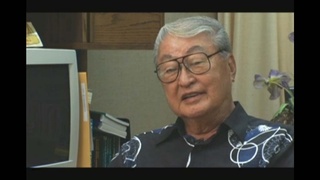Interviews
Joining the hospital unit in Santa Anita Race Track
I didn’t know what was gonna happen, I just miserable and crying and complaining and all…and finally I said, well gee, I’ll go to the hospital unit – I found out they…in the bleachers there was a hospital unit. So I went there and I met Dr. Fujikawa and Dr. Kobayashi, they were…you know, they had been in practice for about 8 years or so. And I asked if I can work there, do something, cause I said I had my California license and my Illinois license. So, they let me work in the skin – dermatology – department. There was nothing to do with skin conditions so I said, well…so I paint them all magenta violet, that purple…any skin condition had that painted on them. So when the people on the camp saw them painted purple, they know they saw me. So I thought, gee why should I do dermatology when you can’t do anything about it, so I said well, after all I have my degree and my license and I can practice medicine, and so then they let me treat other cases.
Date: March 31, 2005
Location: California, US
Interviewer: Gwenn M. Jensen
Contributed by: Watase Media Arts Center, Japanese American National Museum





